Race Report: Cascade Crest 100 2022
On July 22nd and 23rd, 2022 I completed the Cascade Crest 100 in just over 31 hours. Here is the race report
Goals
Results
- Enjoy being outside – ACCOMPLISHED
- Finish the course (even if after the allowed time) – ACCOMPLISHED
- Officially finish (under the official 34 hour cutoff) – ACCOMPLISHED
- Finish in under 30 hours – Not Accomplished
- Top 50% of finishers – Not Accomplished
- Finish in under 27 hours – Not Accomplished
- Top 25% of finishers – Not Accomplished
- Finish in under 24 hours (my bucket list item from last year) – Not Accomplished
Strategy
- Start in that back and go slow for the first half. Start digging in the second half and pass as many people as possible. Finish strong. – ACCOMPLISHED & SUCCESSFUL
Tactics
- Go out slow – back 25% for first 25 miles – ACCOMPLISHED
- Don’t exceed 140bpm in the first 26 miles – MOSTLY ACCOMPLISHED (miles 13-15 I averaged 140 but had spikes in the 140s and as high as 151)
- No mile in the first 50 faster than 10 minute pace – ACCOMPLISHED (fastest was 13:26)
- First 50 average is <120 BPM – ACCOMPLISHED (110 BPM)
- 5 minutes or less at aid stations and stops (excluding bathroom stops) – don’t stop moving – ACCOMPLISHED
- No single mile (and mid-mile stopping) is >30 minutes – ACCOMPLISHED
- 300 calories an hour for the first 30 miles – ~ACCOMPLISHED
- Sub-12 minute miles on the flats around Hyak – ACCOMPLISHED (12:29, 10:21 & 10:47)
- 250 calories an hour after Hyak – Not really sure, but probably mostly accomplished
- Last 50 average is >110 BPM – Not Accomplished (was only 108)
- Sub-12s for the final flat 4 miles – ACCOMPLISHED (11:27, 10:30, 9:31, 7:58 pace)
Successes
What am I proud of from race day?
- Finally finished this thing after a DNF last year (my first ever race DNF)
- New pre-race eating strategy of not eating much seemed to help my stomach
- Executed extremely well
- Lots of patience
- Recovered from a few setbacks and kept finding reasons to rally
- Dug deep when it counted
- Finished STRONG – 7:58 pace for the last mile
- Negative split a 100 mile race
Failures
What areas could I improve for future races?
- I had a dead flashlight battery as it got dark – I should have had a backup from the start rather than having it in my first drop bag.
- Some melted food in one of my drop bags from sitting in the sun.
- Downhill running was the area where I could have had the most improvement.
Thankfuls
What that was out of my control am I thankful for?
- A log to walk upon across the creek so I didn’t have to stop and change my shoes
- Great pacers made the back 50 more enjoyable than it should have been
Frustrations
What that was out of my control do I wish had happened differently?
- Perhaps I’m too far removed from the race day to remember any of the bad stuff, but overall there isn’t anything I would have changed
Race Recap
This is going to be a boring race recap because nothing dramatic happened. I had a plan and I went out and executed it perfectly. I was pretty conservative in setting my goals and I met them. There were no injuries, no near-misses, no mountain lions. Nothing fun like that. Just some good old fashioned running and power hiking for 31 hours straight.
On the other hand, I did experience some new things and was able to learn a few new things about myself, so I’m excited to reflect a bit on this.
Pre-Race
Once again, I wasn’t as trained as I’d hoped to be going into this race
Last year, by race day I had run 692 miles, covered 51k ft of vert and spent 265 hours walking on my treadmill desk while working. This year, the race was five weeks earlier in the year, and I logged; 458 miles of running, 68k ft of vert and 209 treadmill hours. I would more or less call that about the same amount of training, it just had a little more emphasis on vert and a little less on running.
Nonetheless, I was signed up and excited to try my best. My strategy was to basically walk the first 50 miles and then meet up with my pacers for the back half, where I would dig deep, move up in the pack and see what I was made of. From doing 24+ hour events before I knew my heart rate would average about 110bpm, so I wanted to average less than 120bpm in the first half, so I wasn’t crashing in the second half.
Packing for the race was pretty uneventful. I’ve now done a few 24+ hour races, so I know the drill – lots of calories, some backup gear (like headlights and socks) and a few emergency items that I probably won’t touch, but it is good to have just in case.
I loaded up my bags the night before and drove out to the race start in the morning. Having a van with a bed is nice for this, after checkin I went and laid down for a bit. I left to walk to the start line a few minutes before things started.
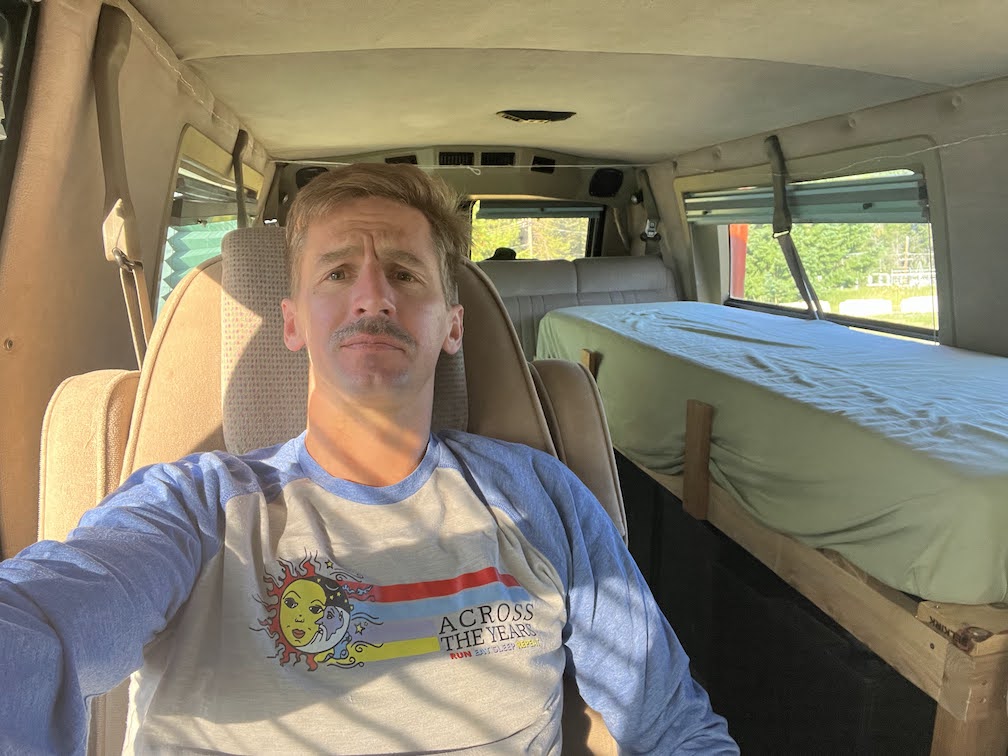
My bag weighted in at 6lbs, which was essentially: 10 oz of bag, 2.2 lbs of water, 2 lbs of food, 10 oz poles and some emergency supplies to round out the difference. I feel I was probably a bit heavy on food, since the aid stations had a lot of stuff I was able to eat. If I were to do this again, I go a bit lighter on food and depend on the aid stations a bit more. It might even be nice to bring a baggie with me to fill up at the aid stations rather than just carrying things in my hand. The volume of water I carried was good – I ran low a few times but don’t recall running out.
The Start
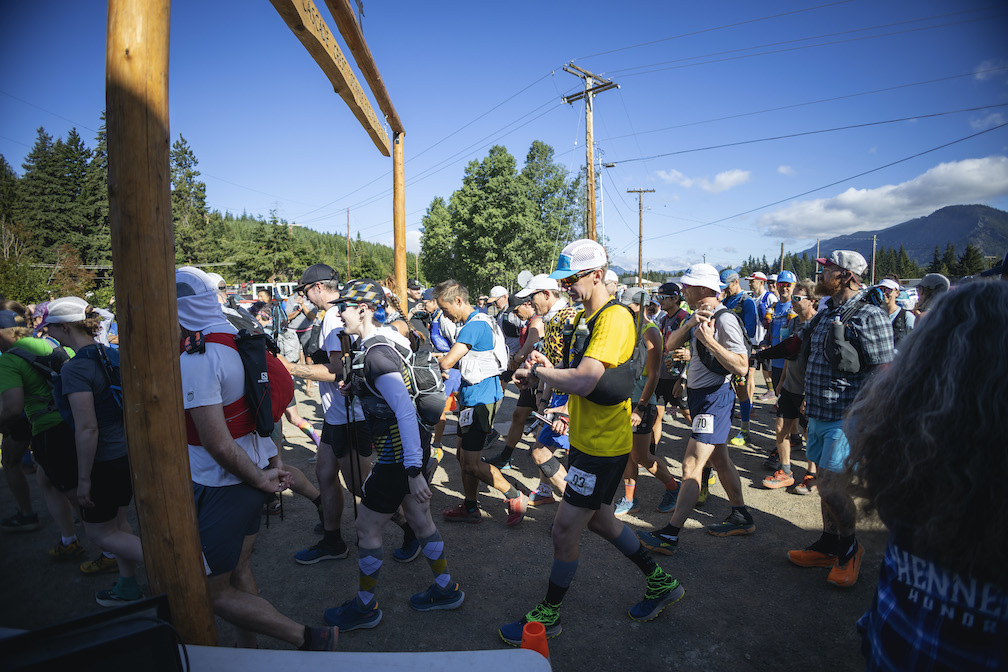 My goal was to go out really slow to fight off all of the pre-race nerves and get myself away from other runners who would make me want to run faster. I accomplished this by starting the day with a 14 minute mile pace walk on the flat asphalt to the trailhead as the pack jogged in front of me. I knew that I’d see most of them later in the day, 100s are long, no need to go out fast. I was literally in last place for the first mile, but I’d go on to pass another 80 of those people later on.
My goal was to go out really slow to fight off all of the pre-race nerves and get myself away from other runners who would make me want to run faster. I accomplished this by starting the day with a 14 minute mile pace walk on the flat asphalt to the trailhead as the pack jogged in front of me. I knew that I’d see most of them later in the day, 100s are long, no need to go out fast. I was literally in last place for the first mile, but I’d go on to pass another 80 of those people later on.
The first uphill is a beast. Two miles of flat and then a 3k ft climb over the following 5 miles. I didn’t want to pass people for the first 10 miles or so, but despite my slow walking, I was passing a few people that had stopped to take breaks. Having previously done 24 Hours on Mailbox where I covered 29k ft of vert, this first hill was essentially just a wake up stretch for my legs. I was slow and smooth.
Looking at a few runners on Strava, I can see that my fairly even pacing resulted in a bit of a yoyo with most. Some of them were as far as two hours ahead of me by the middle or the race (shown in the chart below as the blue lines towards the top) and then finished 1-2 hours behind me. 100s are just hard and no one is really good at pacing them evenly. Some research shows the average performance is 17% slower in the second half and that is true even among professional athletes. I ended up negative splitting by just a bit, and so the uneven pacing stands out even more when comparing it to my splits. I think what that means is I went out a bit too slow, but having never finished a 100 mile trail race before, I was fine with taking a conservative approach.
Looking at this chart you can see a few things that stand out. In the first half I slowly lose ground (line going up and to the right) but there are a few spots where I recover a bit (dips) which line up with aid stations. My strategy of not stopping for long paid off some there. In the back half I slowly gain (line going down and to the right) but at the rest stops we see some sharp drops, meaning the strategy worked even better there.
I found that my fitness helped me disproportionately on uphills. I would move past people as we climbed, but on downhills a few would pass me back. This is likely due to the extra emphasis I put on strength and uphill training this year. I could keep a very solid power hike going on the uphills without letting my heart rate go too high. I wasn’t jogging the downhills because I thought it was a good idea to save my knees for later in the race, but this is something I’ll reflect on more later in the post.
At some point a fighter jet flew past us as we hiked up the side of a mountain. There are a few bases in the area and the pilots like to fly low for training. I was still rocking my Goose mustache from having seen Top Gun recently, and so that was a nice on-theme surprise for the day. In fact, I believe some of the scenes from the new Top Gun were filmed in that area, it certainly looks very similar to the terrain from the mission.
Blowout Mountain
I’m not sure how this place got its name, but it lived up to it on race day. I tend to have stomach issues on long runs, so it was no surprise when about 15 miles in, I had to take a pit stop on the side of the trail with quick notice. Thankfully that was my most eventful stomach incident of the day and not an omen of more to come.
I am tentatively giving some credit to my stomach success to a new strategy I tried for this race where, rather than gorging myself before the race, I started eating race-like food for ~24 hours before. This seemed to work as my stomach was mostly cleared of inefficient food after hour 5 and I ran the rest of the day on zero-waste, perfectly using what I put in. There are some deeper questions to ask here, about typical living, but for now I’m going to take this as a key learning for future races to have an easier time.
Passing My Drop Out Spot
About 10.5 hours in I passed the spot where I dropped out the year prior. The mileage was slightly different because they changed the course some, but it was roughly the same distance into the race.
This was a point of reflection.
The year prior at mile 35 I had felt to defeated, like I had already given it my best shot and was now starting to drop off. Like there was no way I was going to be able to push on and finish. This year, felt a lot different. I was still tired. Looking back the paces on my previous few miles weren’t that different either – 20s on the up and just below that on a bumpy flat. Mentally I felt so much better this year though. Where as last year I felt like I was in the back and it was only going to get worse, this year I was in the back and knew I was still going to drop even farther back over the next 15 miles, but that is when I’d start moving up.
A lot of that has to do with experience. Between the year prior and that day, I had completed another organized 24 hour race in which I got to experience how much the back half slows most runners down. The year prior, being in the back at mile 35 made me feel like I had really screwed up. This year, me being in the back gave me confidence that I was right on schedule.
Knowing that, I think I could have finished the race last year, even though I had just gotten over COVID. I still think stopping was the best decision for me at the time, knowing what I knew about the risks and how little I knew about long races. But having been through that again, I suspect that after a few more tough miles, I would have found another wind and had a chance to get back into a decent groove. Who knows though, 65 miles is a long way to go.
Darkness Sets In
The course’s final ~10 miles on the PCT are always tough for me as the footing is fairly technical and a bit inconsistent, which makes it hard for me to get in a good rhythm. That becomes even harder as the light decreases, and eventually you’re running by flashlight.
I had stashed a head lamp in my drop back at Stampede pass so that I didn’t have to carry it the whole day. As I arrived, on schedule, I picked it up. When it began to get dark around 9 or 10pm I turned it on and kept moving. I recall this section being particularly difficult, but looking back at my times, they weren’t that bad. There weren’t many people around me though to pass, and I got passed here by one or two people, which probably made it seem even worse. I pushed through though and kept moving.
At some point my light dropped into low light mode, which took me by surprise. I turned it back up and then it dropped again. Apparently my battery was almost drained, even though it had only been an hour or so. I had charged all of my batteries to full before the race and they should have lasted 8-10 hours. I knew I had a backup battery (and another light just in case) at Hyak, but that was still about 5-10 miles away, which would be 2-3 hours at the pace I was moving. The battery should last for a few hours in low light mode, but I wasn’t able to move very fast on the trail with so little light.
Eventually another runner caught me and I decided to stick with them, using their light to help me see my footing. I kind of ignored everything else for an hour and just stuck with them until the Olallie Meadow aid station. At that point I took one of my longest breaks of the race to regather myself, eat some food to get warmed up and wait for another runner with a light to leave the aid station so that I could follow them. It was still probably only 5 minutes in total though – that mile clocked in at 28 minutes compared to a 24 before and a 22 after. That was one of only two times I recall sitting down over the 31 hours though, so take that for what it is – a signal that I was hurting.
The next mile was rough. That section is steep, rocky, and has a few confusing turns. A few of us ended up getting packed up together through here, which was nice, as there was plenty of light. We made it down the ropes section and onto the gravel trail that went up to and through the tunnel.
Digging Deep To Start the Second Half
I had planned my race using some results from previous years, mapped out into a big spreadsheet that told me where I should get to by certain hours and provided data that told me other people were all-but-certain to slow down. My strategy was to start slow and then, at the half way point, turn it on, right when everyone else was hurting. I figured that would give me a low-risk way to have an enjoyable 2nd half of the race. Worst case scenario, I wasn’t able to turn it on, and I could just finish slowly.
I had seen that almost all finishers that were able to finish the race before the 34 hour cutoff made it to Hyak, 54 miles in, by 1am. I had wanted to get there a little bit before that, to be safe, but, in fact, it was already after 1am and I still had a few miles of gravel to go. That would probably take me another hour, so I was getting a bit worried about my ability to finish based on the previous finisher data.
Nonetheless, as I got onto the gravel road, I knew I had ~3 miles of runnable trail in front of me and that I was now officially past the half way point. That meant I was now free to start digging deeper. I also knew that my crew, Ben and Pen, were waiting for me at Hyak. I knew it would bring me a lot of energy to see them and it would help me keep moving to have them pace me for the back half of the race.
So I decided it was time to see what I was made of and what my tired body could do. I put some music on, locked into the zone and started jogging to the low light of my dying flashlight. I ended up managing to put up a few 12 minute miles, which I was extremely happy with.
I emerged from the tunnel to the smiling faces of my crew, feeling much better. It is amazing how I went from an easy pace and feeling bad, to a harder pace and feeling good. The back half of a 100 miler is mostly mental and I had set the tone for the next 50 miles.
At Hyak I took a few minutes to sit down and change my shoes. I asked Ben to help change the battery in my flashlight, picked up some extra layers I would need for the night and gave Pen the rest of my gear to take through to the Lake Kachess campground aid station.
I had never run any of the back half of the course before since I dropped out early the year before and hadn’t had a chance to scout it before the race. So I was running into the unknown as we left Hyak. That wasn’t going to slow me down though. Right on strategy I dropped 12:29, 10:21 & 10:47 on the next miles with the pacing help of Ben. I was feeling great.
The Night Train on the Fire Road
I’m not sure exactly what position I was in at the half way point, but I’d guess it was ~140th of 175 (but maybe a few had already dropped out by then). Only 125 runners would go on to finish it and at that point, all of those people (and then some) were ahead of me. It was time to start catching them.
Ben and I got in a good rhythm as the asphalt gave way to a gravel fire road that climbed 500 ft per mile. I got my poles out and just started chugging. I was a train climbing up the hill. No stops, no complaining, just heads down powering up hill. I think I can. We passed 30-40 people in the next 5 miles, but perhaps a lot of them were pacers.
There were a few aid stations on that stretch, but we hardly stopped for more than a minute. I was in my zone and picking off other runners. I wanted to keep it up.
As we hit the crest and began to head down I struggled a bit to find a good pace though. I jogged a 13 and then slowed down to a 19, followed by an 8:02 at one point. I really don’t have a good sustainable, easy downhill jog gear, but I need one for races likes this. I have an all-out downhill gear and I have a save your legs for the uphills gear, but not something efficient and fast.
By this point I’d developed a pretty nasty blister on the back of my foot, but I was still moving pretty well, so I took my usual strategy of just ignoring it.
Handoff at Lake Kachess
As the sun began to rise, we pulled into the Lake Kachess campground where Pen was waiting to relieve Ben from the night duty shift. I had wanted to get there around 4:30am, but it was actually 5:30. That meant I was behind my schedule, but I had set a pretty aggressive schedule for that night and I had been able to keep it. In fact, I would go on to finish about an hour behind my target, meaning I lost an hour on the first 54 miles but held the back 46 exactly as I had planned.
In good spirits, we took off from the aid station, with Pen in full cheer helping drag me along the section known as ‘the trail from hell’. It really isn’t so bad, it is a nice area with gorgeous views of the lake. It just has a lot of ups and downs over logs, rocks and small creeks. If you expect to go fast (as one naturally would by looking at the relatively flat elevation profile) then you’ll be disappointed when you realize how technical it is. I had data that told me I should expect 2.5-3 hours though, so I was pleasantly surprised to be at the low end of that range.
That nasty blister on the back of my foot popped at some point and was now stinging pretty bad. I had clean shoes and socks at Mineral Creek and figured I could change them if I needed to. Part of me didn’t want to touch it though – sometimes its better to let sleeping dogs lie.
Mineral Creek and Back Up
Mineral Creek is the one spot of the course you’re almost guaranteed to get wet as you cross the creek. I had an extra pair of shoes in my drop bag to change into. As we got closer we saw a fallen log across the creek that looked like it was possible to use. Pen went across fine and I debated if it was worth it. My balance is usually pretty solid, but I was 22 hours into the race now and my leg + reaction time weren’t at the top of their game. I took the risk nonetheless – I figured the fall wasn’t so far and the cost (getting everything wet) wasn’t much better than the baseline (getting my legs and shoes wet). In the end I didn’t fall, so that was nice. I ended up deciding not to change my shoes either given I had only done ~13 miles in them and they were feeling good.
We grabbed some pizza quesadillas at the aid station and started back on another long fire road uphill slog.
For this leg of the journey Pen and I ended up moving a pretty similar pace to another runner and her pacer. The four of us ended up maintaining a pack up the hill. It was nice to be able to just zone out and hike as Pen and the other pacer talked. The two of us who were 75+ miles in were pretty quiet for some reason…
Needles
The crux of the Cascade Crest 100 is the Cardiac Needles. The aptly named steep peaks whose elevation profile is reminiscent of the spikes of cardiogram. On tired legs, approaching the steep repeated spikes is demoralizing. My quads were strong and I was passing people on each uphill, but my legs were getting wobbly. I knew it that the needles were the final hills and that the course would be easier after we passed them, but Pen (who had run the course before) couldn’t remember if there were 5 or 6 of them. Or maybe it was 8.
Eventually we got to the big one, Thorpe Mountain. That was the one out-and-back of the course. You turned off the trail and had an extra 400-500 ft of vert to cover over a quarter mile. At the top you got token and then came back down to the aid station. The nice part about that section is since you were coming back, you could toss your vest down and grab it on the way, so I got a little bit of time with that weight off of me.
At that point, we swore we were done. But in reality there was another needle or two, though that last one was actually really small.
Down to Town
At this point we were something like 90 miles into the race and it was all downhill or flat to the finish. I wish I could have been thriving here, but the reality was I had probably settled into my place in the pack. I would pass a few people, but there were a few others that would pass me back.
Again, a downhill section where I was struggling. I just didn’t have the quad strength to feel confident letting gravity cary me down. I tried to let go a few times, but my legs felt sluggish and heavy. I was worried I’d trip and end my race (and summer) so I kept playing it easy. This was the one section of the course where people passed me, only one or two people, but still, it shows me it was a weak area in comparison.
Thinking back, I really hadn’t done any downhill running this year. My uphill training was mostly hiking or on my 24 hours of Le Mailbox day where I intentionally walked downhill to try and save my legs. It turns out downhill running is one of the most important things that distinguishes great ultrarunners. I recent found some research that downhill running pace in the back half if the best predictor of strong overall results. With that in mind, I think my downhill jogging is probably the area with the most room for improvement for me in future years. Having a sustainable jog that didn’t blow my knees while also being relatively easy on the cardio systems, would probably save me an hour or more. Next time I do a 100 I’ll have to train a bit more on that.
Nevertheless, back on the course I was doing some math in my head trying to figure out how much longer I had to endure for. I figured another 10 miles at an average 20 minute mile pace was just over 3 hours. I was 29.5 hours into the race, so that would put me under the cutoff time of 34 hours, but just barely. It turns out there were two bad assumptions in that statement I just made – and for once they were in the good direction. The first was how far into the race I was, I thought it was 10 miles, but it was probably 7 actually – my watch was a little bit off, which sometimes happens on long mountain runs. The second bad assumption was my average pace, which I thought would be in the 20s, but it turns out, I was able to drop significantly.
At some point I wiped my nose and realized it was bleeding. Probably a combination of dry air and lots of stress on the body. I decided it wasn’t bad enough to stop, so I shoved some TP up my nose and kept running, trying to breathe out of my mouth. Eventually it stopped, but not before I grabbed this gem of a picture.
The Finishing Formation
As we got down from the final descent my friend Coop and one of his friends showed up to help pace us for the final flats. I took a quick stop in the aid station and started jogging. I figured I could hold a decent pace until the end as I thought it was only ~6-7 miles left at this point. (In fact, is was only 3.5 miles)
I started down the trail at a 12 minute mile pace and asked the other three guys to just group up around me in like we were going for a training run and keep a convo going. I’ve spent many hours of my life running in a group, sometimes at very uncomfortable paces. I’ve learned to zone out and let the group cary me through the rough patches until I regain my composure and can carry the group a bit. I figured I could do that here. At least for a bit.
The trail turned into grass and then the grass turned into pavement. My speed kept increasing with the faster surfaces. My next miles would be 11:27, 10:30 and 9:31. When I’d feel good I’d push the pace a bit and the group would stick with me. When I felt bad, I’d hide it and keep with the group, who wouldn’t slow down. As a result we kept going faster and faster, which is exactly what I needed. Somehow the wheels weren’t falling off.
At some point I checked my watch and figured we had 3-4 miles left, but really wasn’t sure I could hold on for that long. We then turned a corner and, to my surprise, I saw the finish line. I asked Pen if we had to do any loops before we got there and he confirmed that it was a straight shot. I realized my watch had been off a bit (likely due to the tunnel and switchbacks) and I only had about a half mile remaining. At that point I dropped the hammer. My last 0.82 mile cam in at 7:58 pace, my fastest of the race.
As we approached the finish line I leaned hard like a 400m sprinter leaning to break the tape. In this case, the tape was broken about 12 hours prior, but you can never be too safe.
I had finished in just over 31 hours. A long way from the 24 hour goal I had the year before, but also well under the 34 hour cutoff I had been worried about 50 miles prior. I would really have liked to have finished in under 30 hours and been in the top 50% of finishers, but unfortunately the hour I lost in the first 50 hurt me there. I believe I was in the top 25% of 2nd half splits though, which is something to be proud of.
Post Race
I sat down in a chair to soak my feet and asses the damage. The blister that had pained me earlier lived up to the feeling. It had been about the size of a baseball and a section of skin the size of a golf ball had gone missing.
I ate a lot of food. Pizza. A hamburger. Two milkshakes. Some Gatorade. The rewards of 31 hours in calorie debt.
Eventually we made our way to the lake and sat around drinking beer and talking. I had Coop drive me most of the way home so I didn’t fall asleep – I hadn’t slept in 36 hours. I ended up getting a text about a few people hanging out near me and swung over for a drink before I headed home. Maybe I didn’t smell as bad as I should have because it took them a minute to figure out that when I said I’d run 100 miles I meant that I literally hadn’t been home to shower yet.
I got home late, took a shower, went to bed and was up early to relieve my wife of four children she’d been watching for the past two days. We saw the Minions movie, because that is about all I had energy to do.
What’s Next
This race loomed over me for a year and a half and I was excited to finish it. At the finish line lots of people talked about coming back next year or other 100 mile races they wanted to run. I felt a calm about the whole thing. I knew I could do it now and wasn’t sure I had anything left to prove or accomplish in long races.
Right now I’m in a spot where I’m figuring out what I might want to do and why I might want to do it. I’ll definitely end up doing some more trail running in the summer, but I’m not sure if I feel like entering an organized race. I might end up pacing someone at the Cascade Crest 100 in the future, but I’m not sure I need to run it again, unless I ever get into a place where I can train a bit more and go for a time closer to 24 hours. For now I’m going to recover a bit and wait for inspiration.
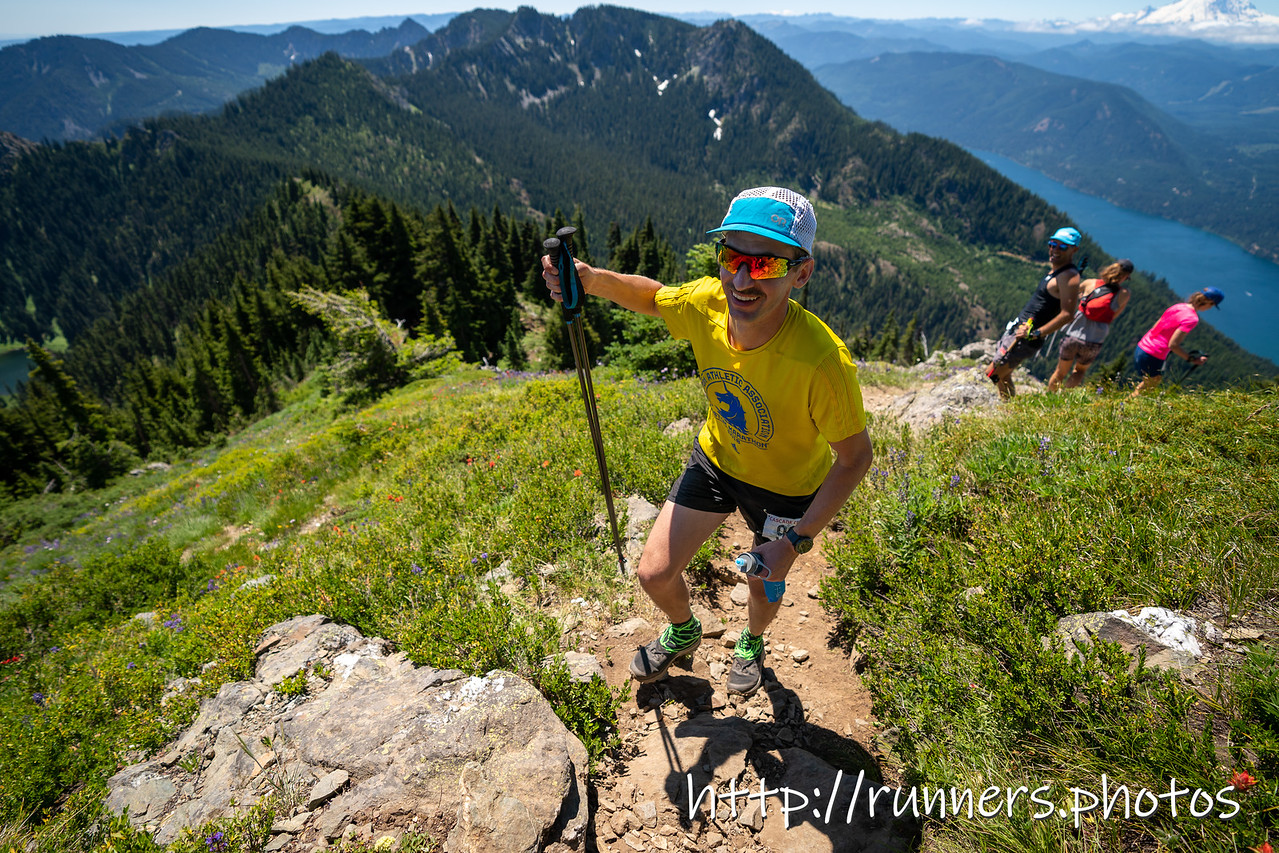
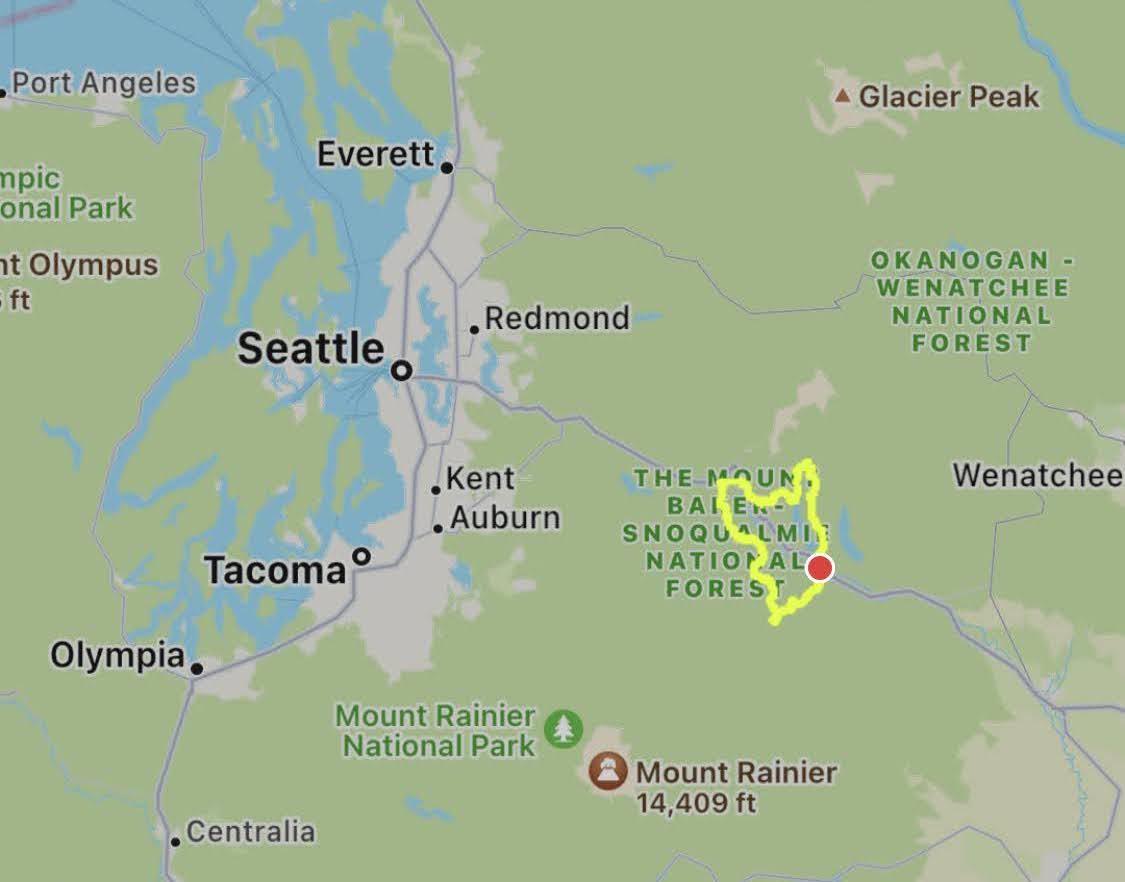
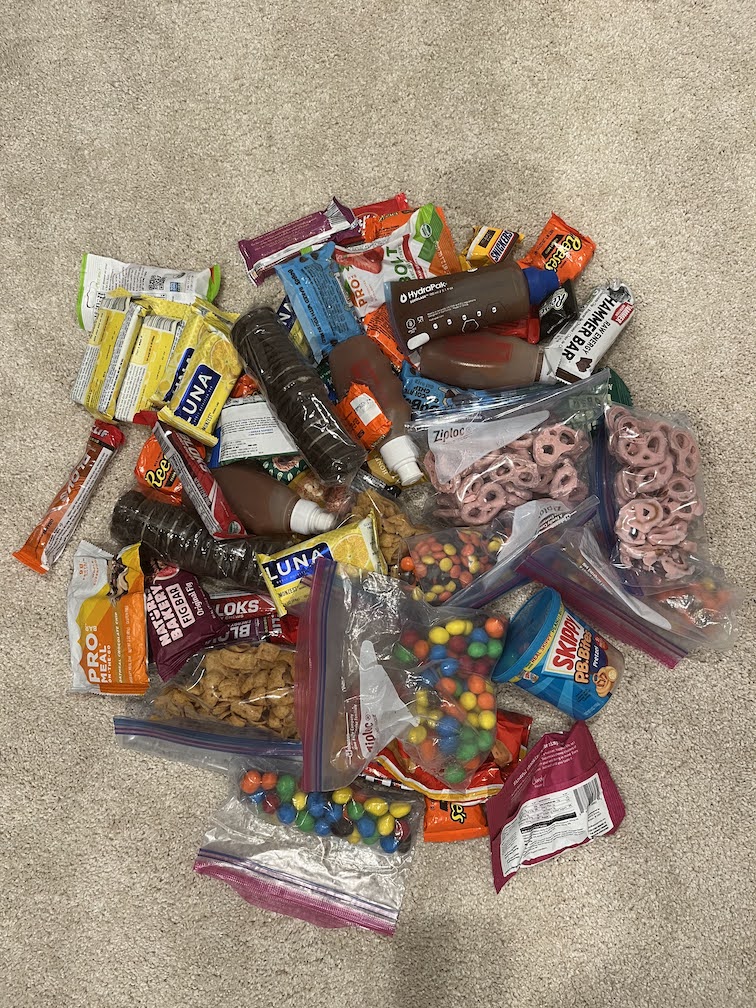
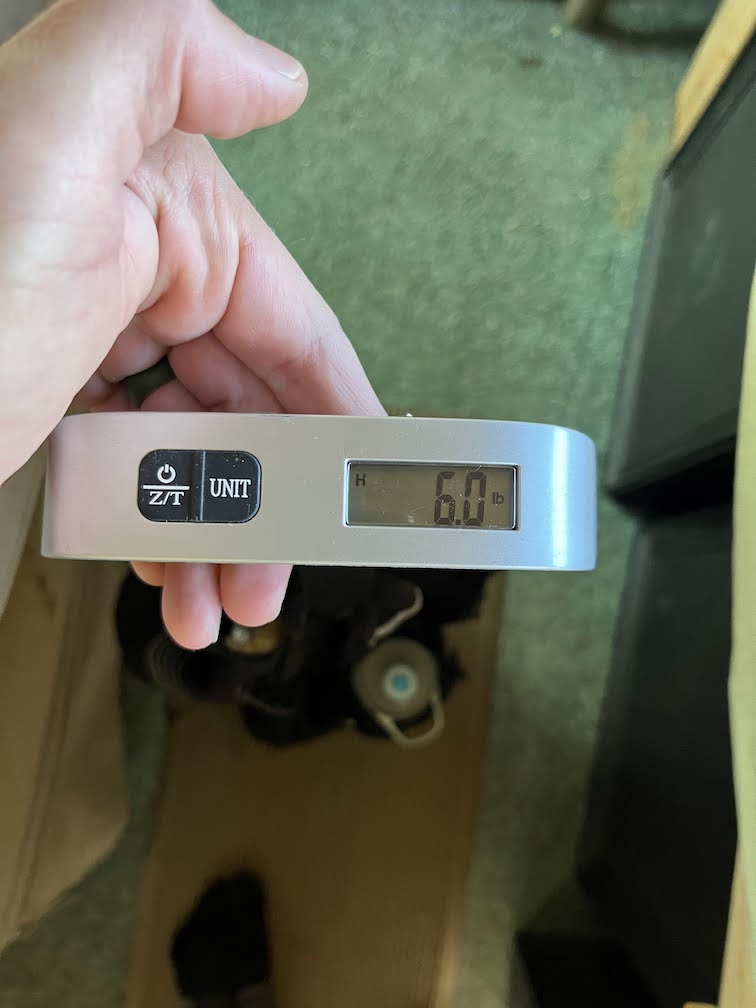
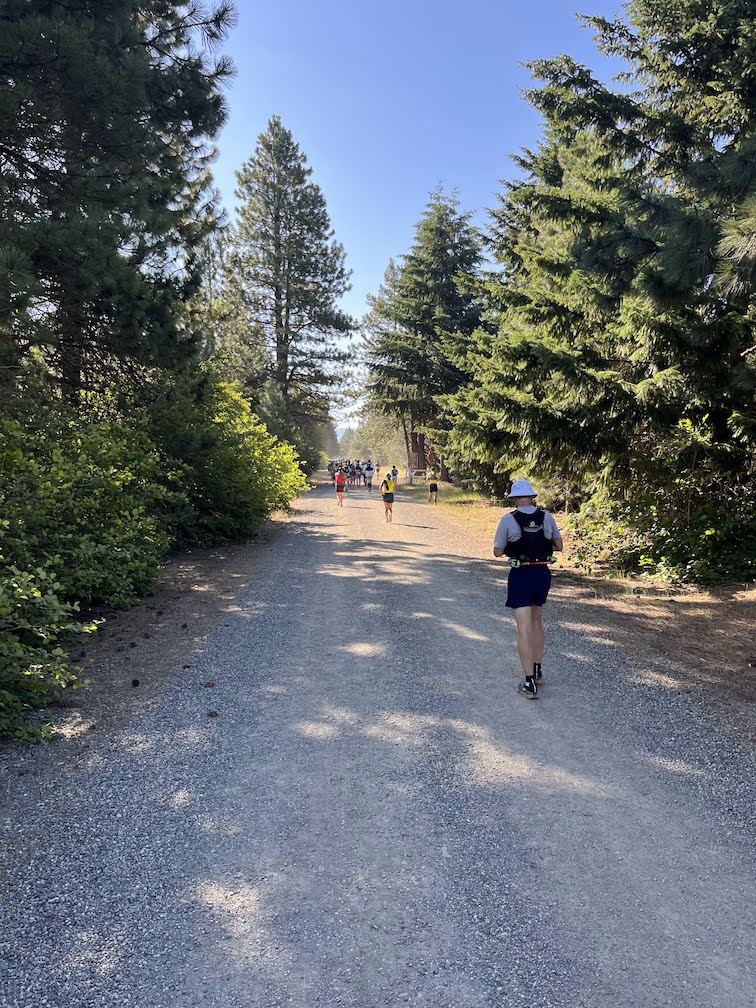
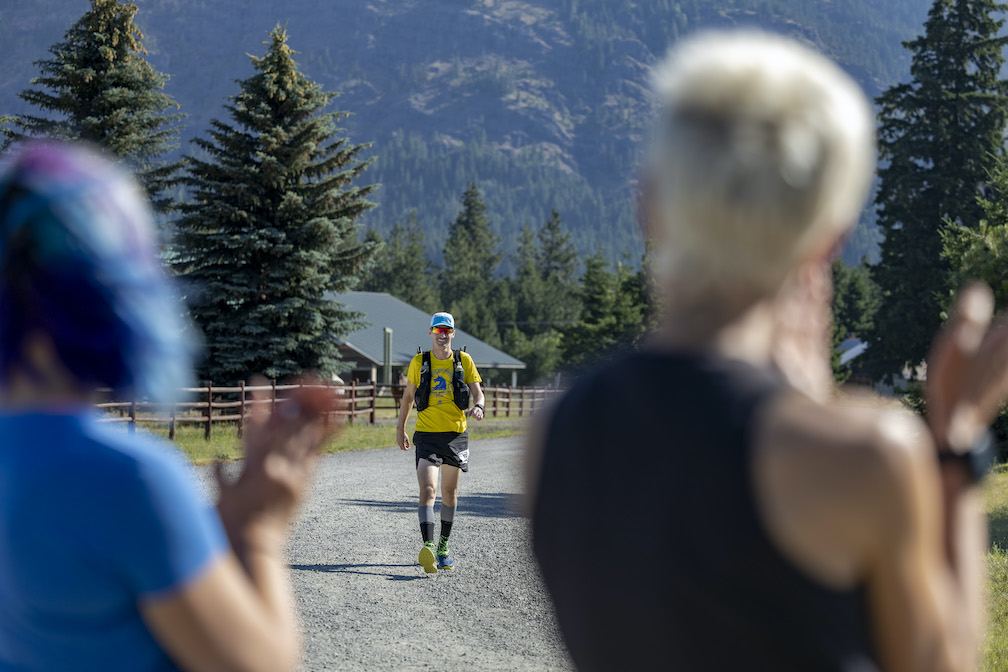
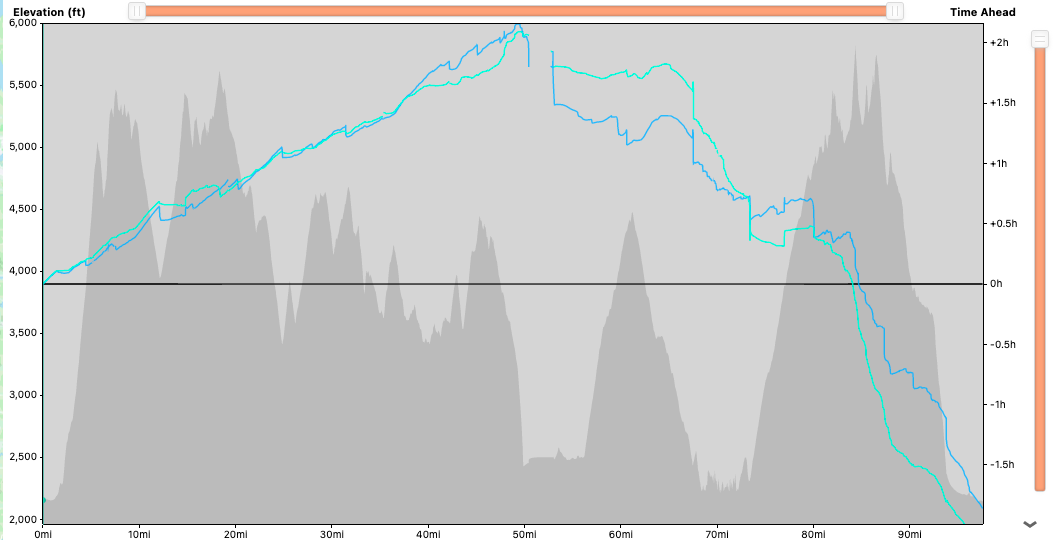
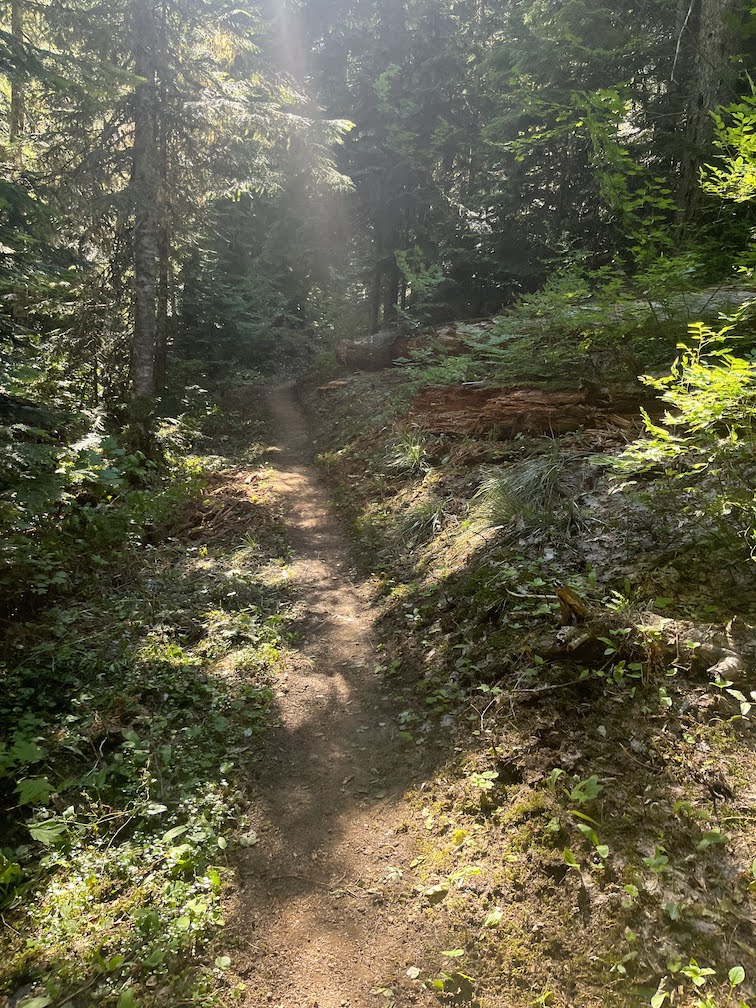
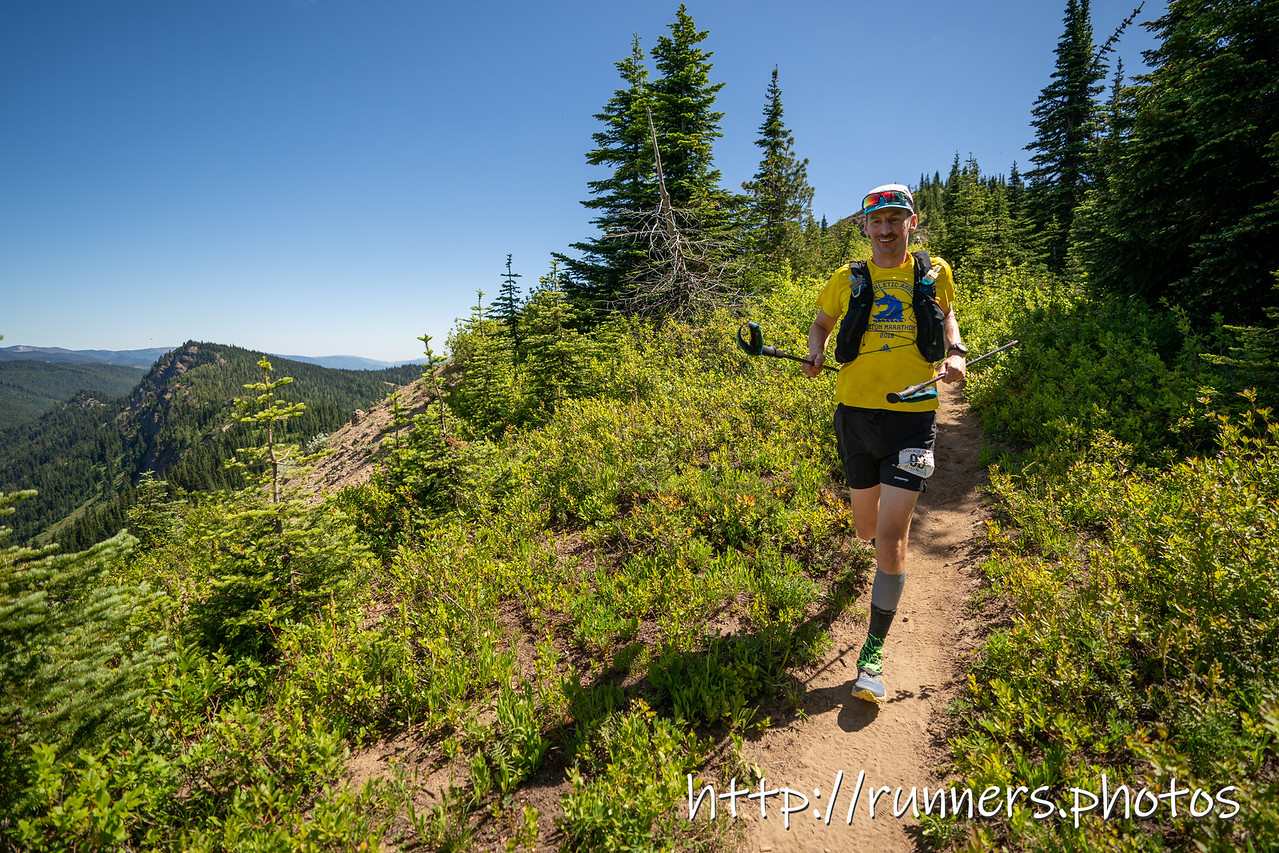
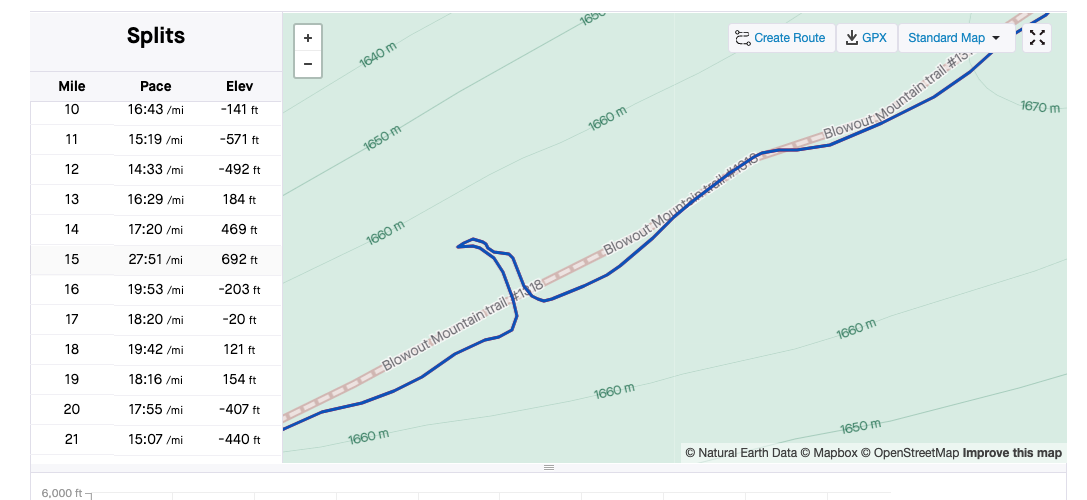
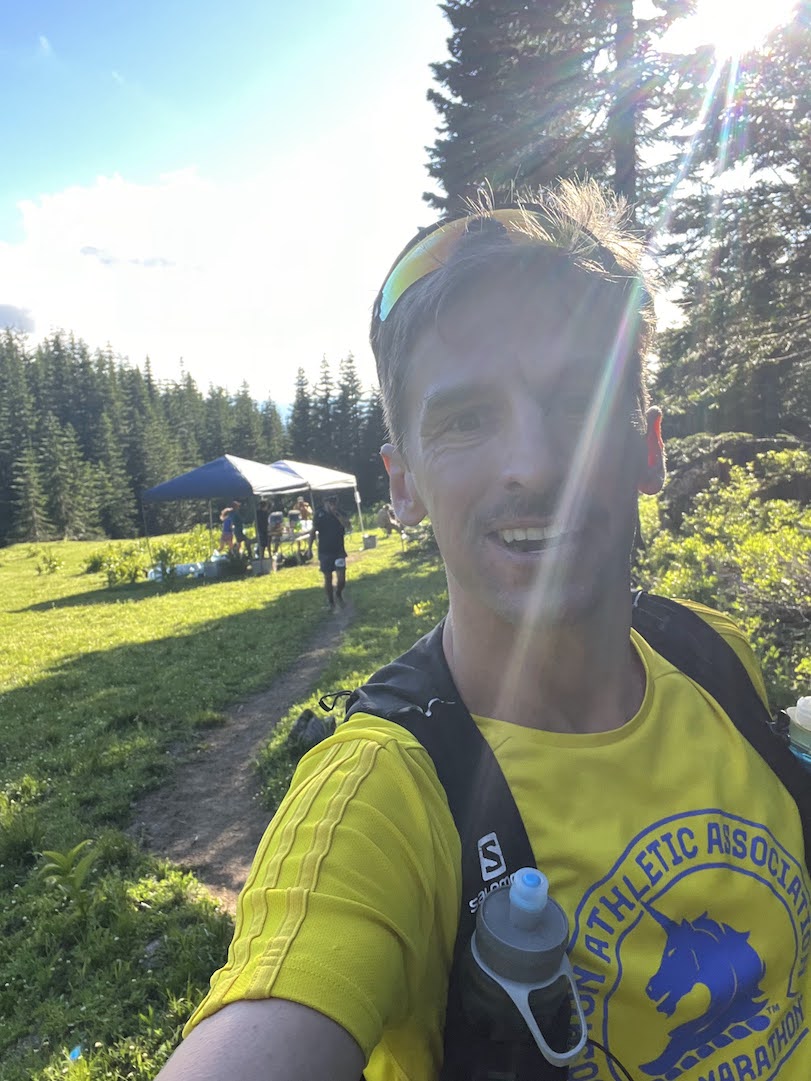
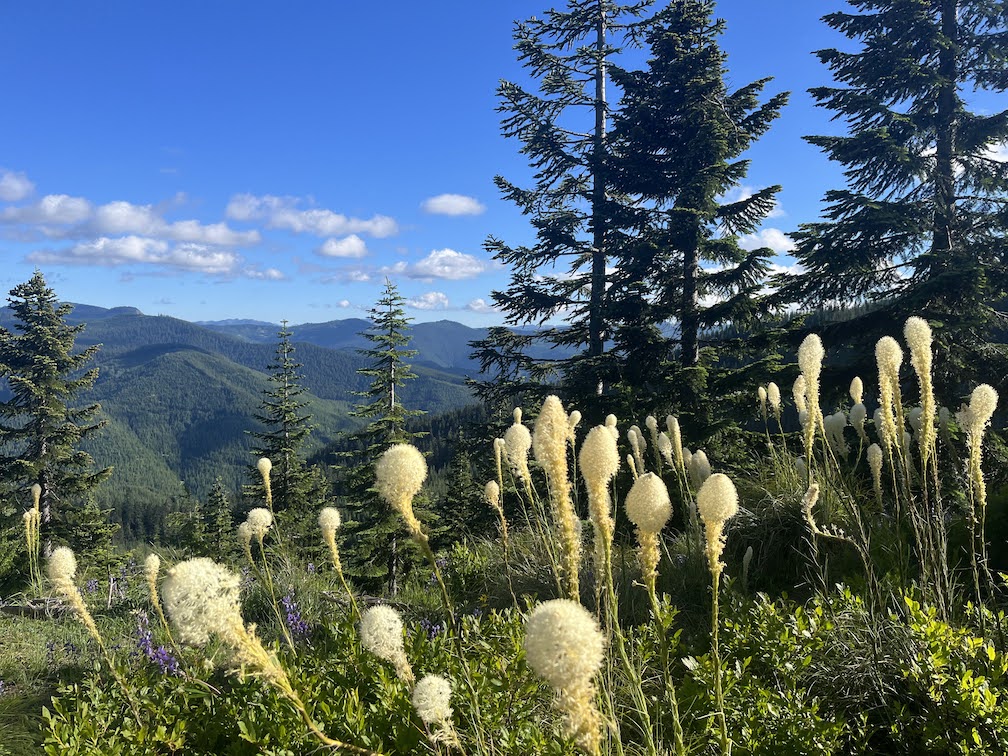
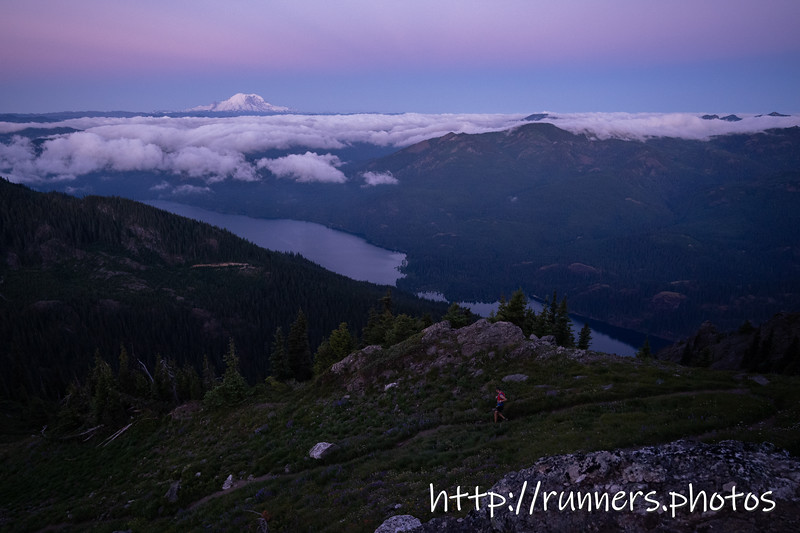
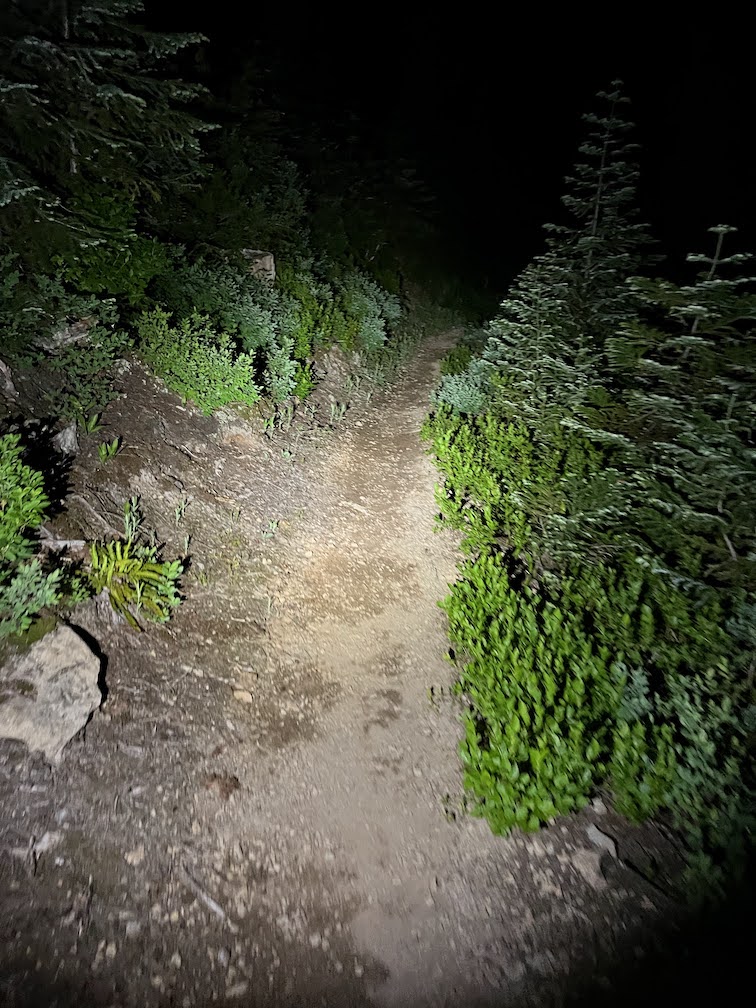

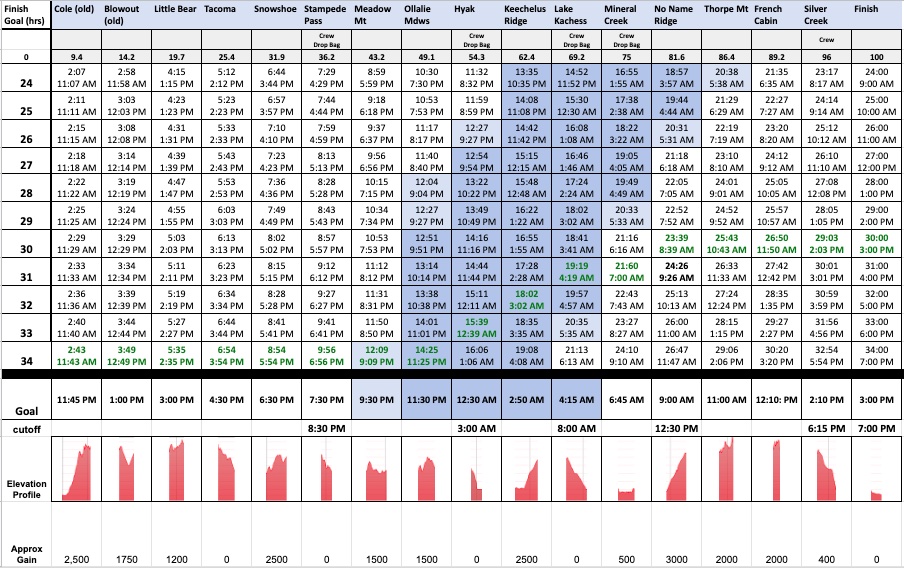
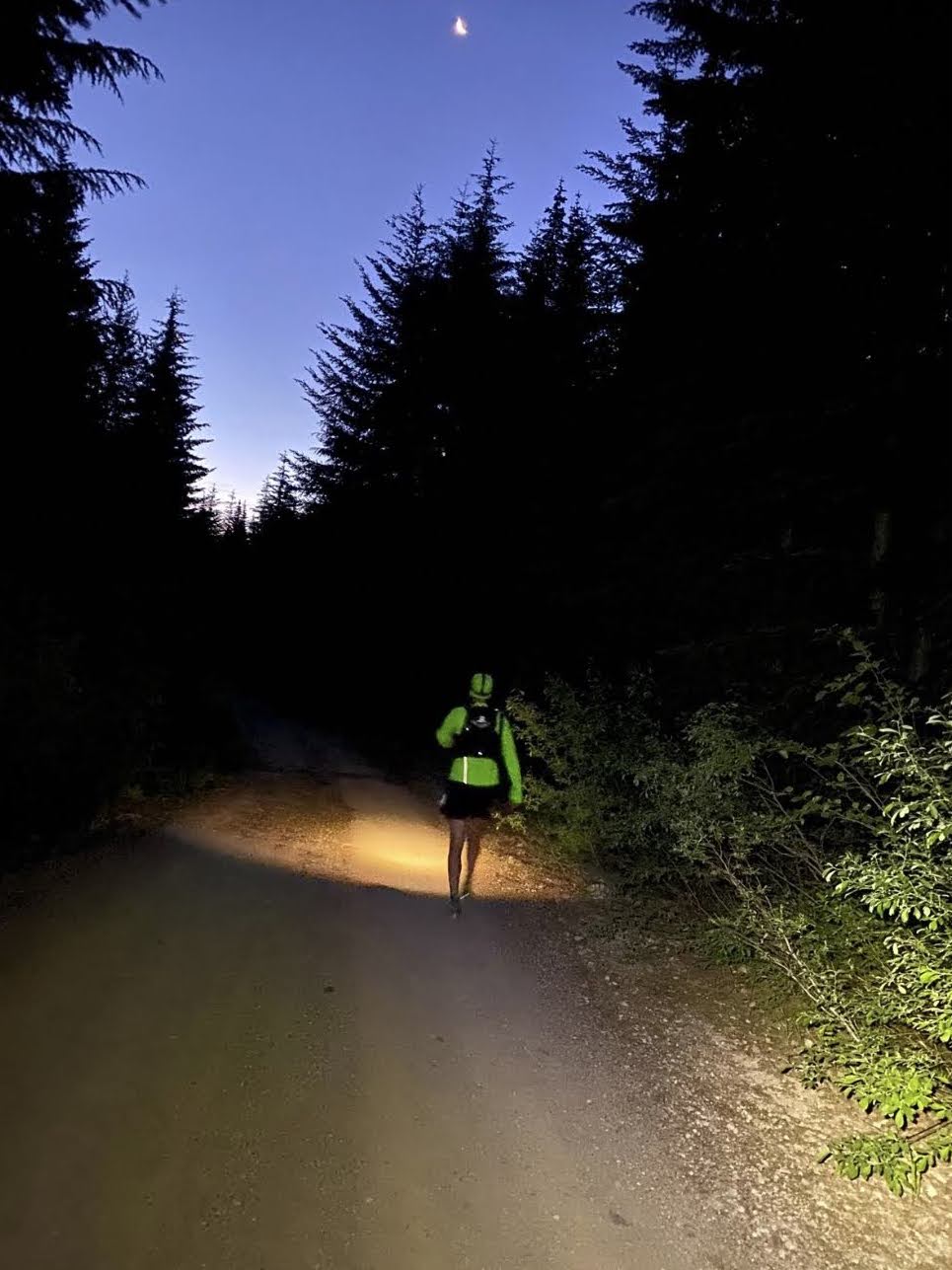
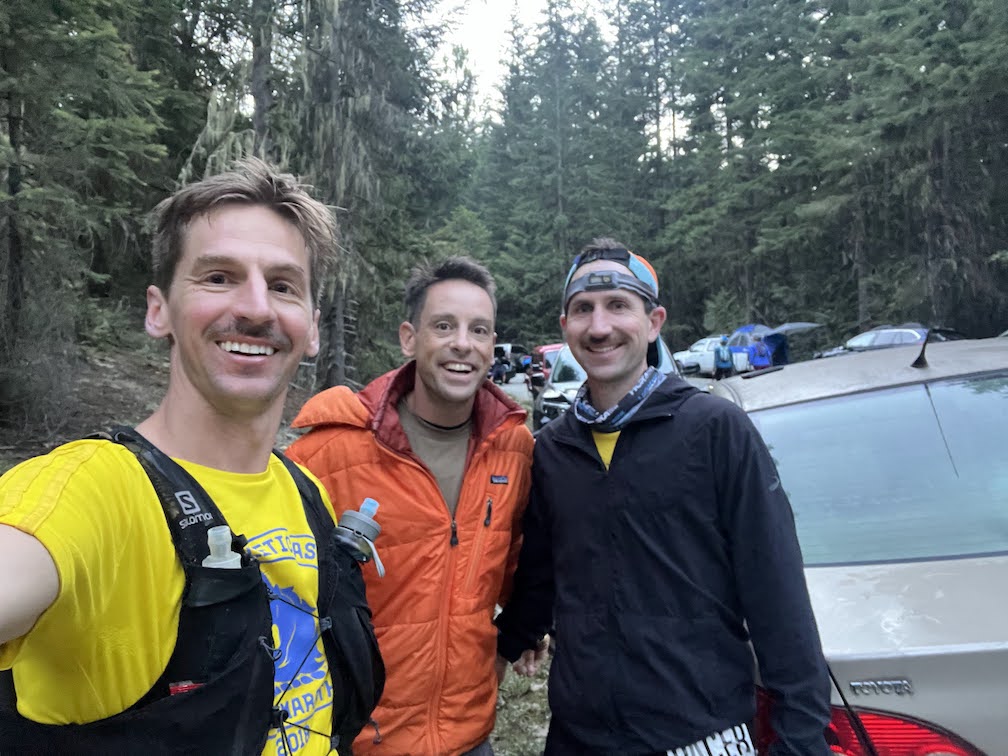
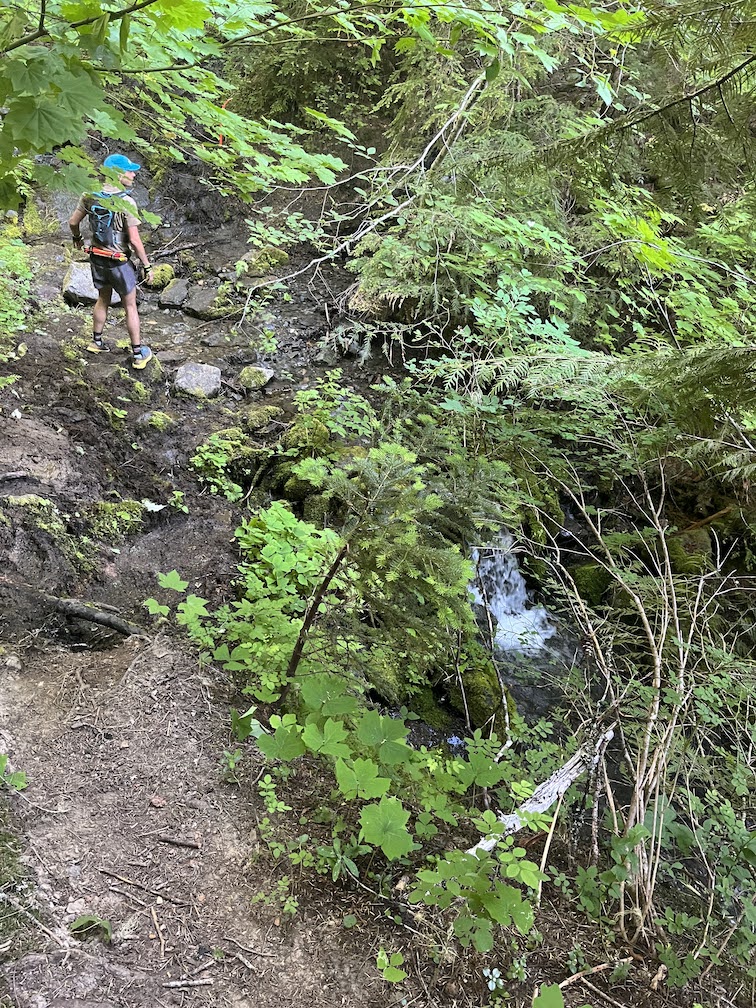
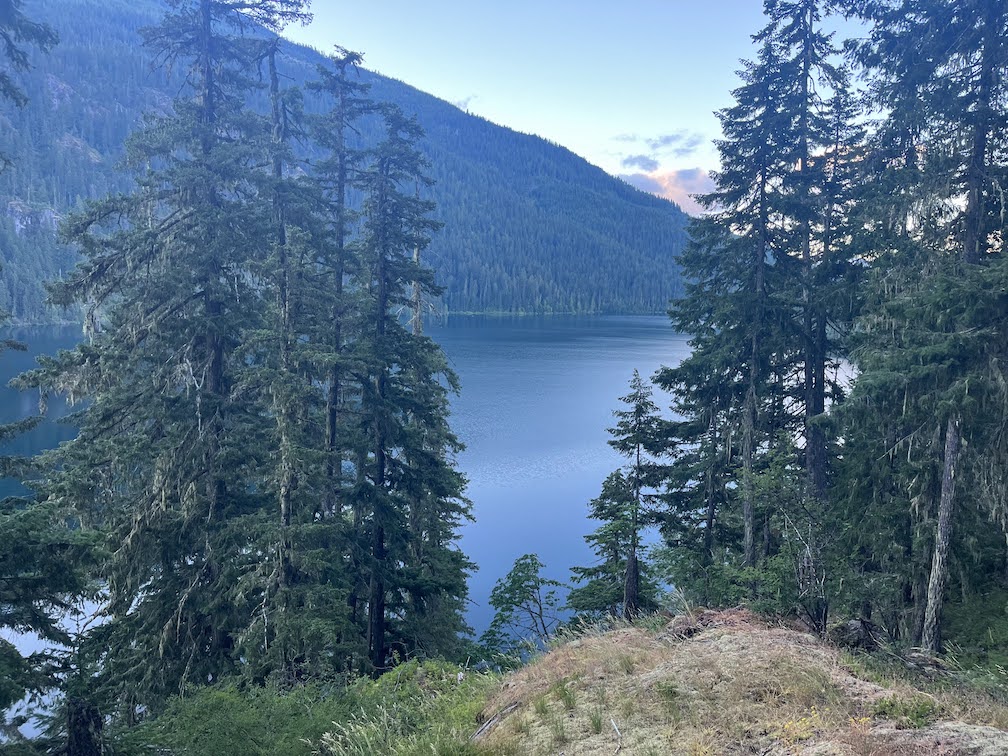
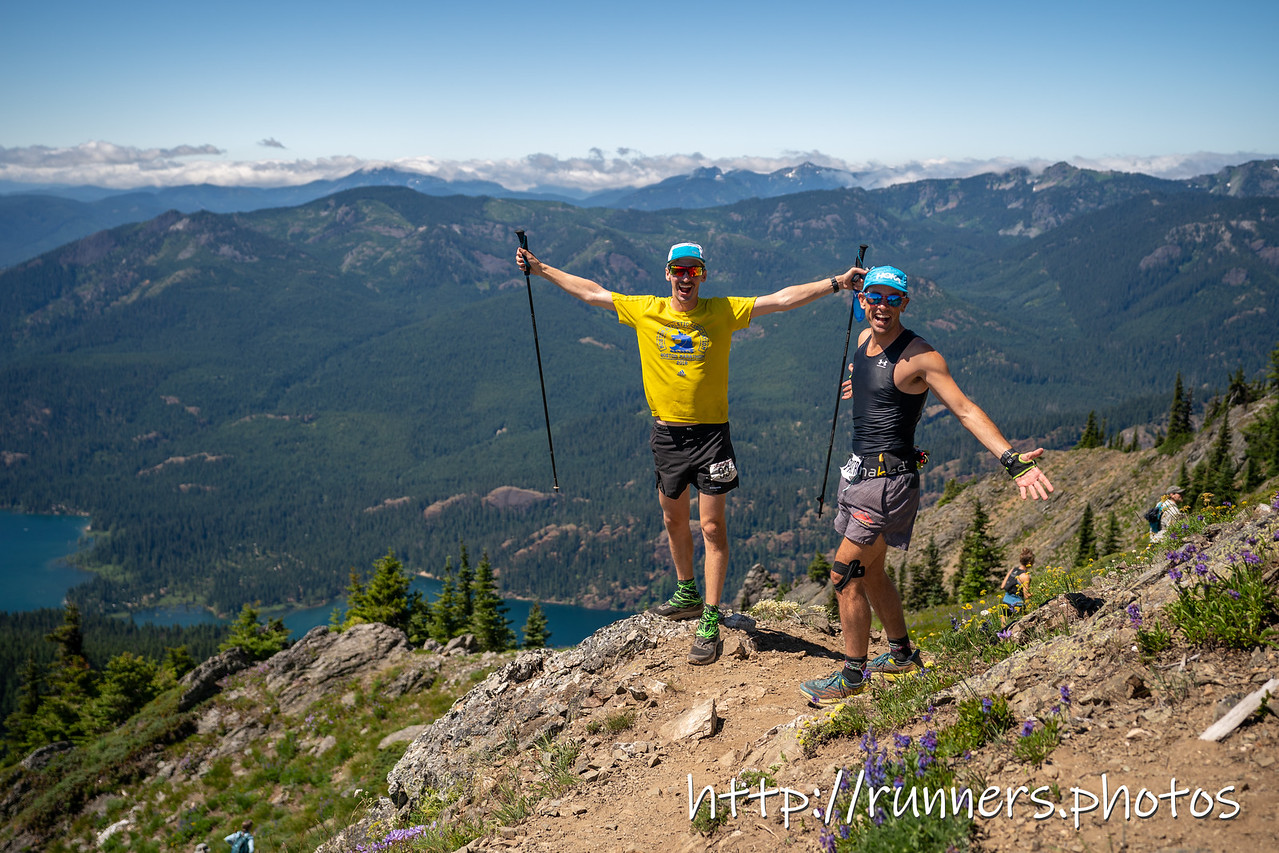
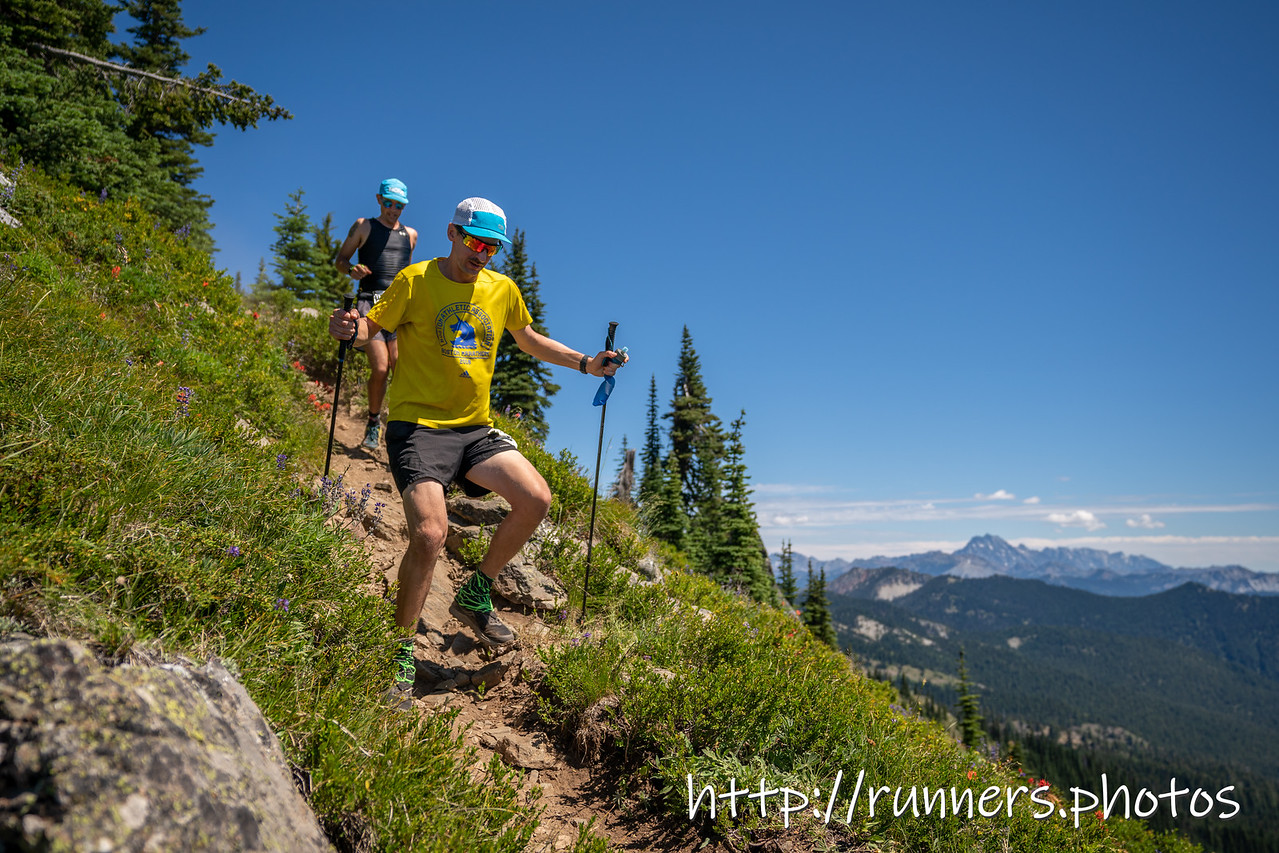
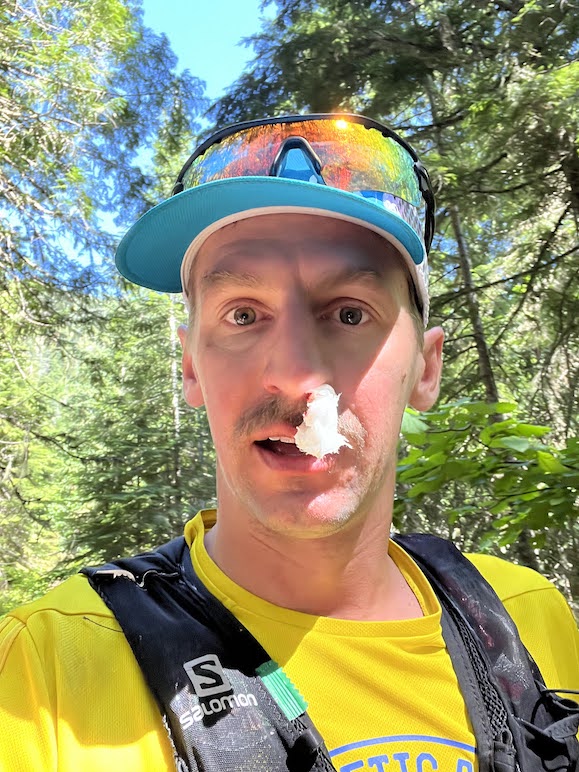
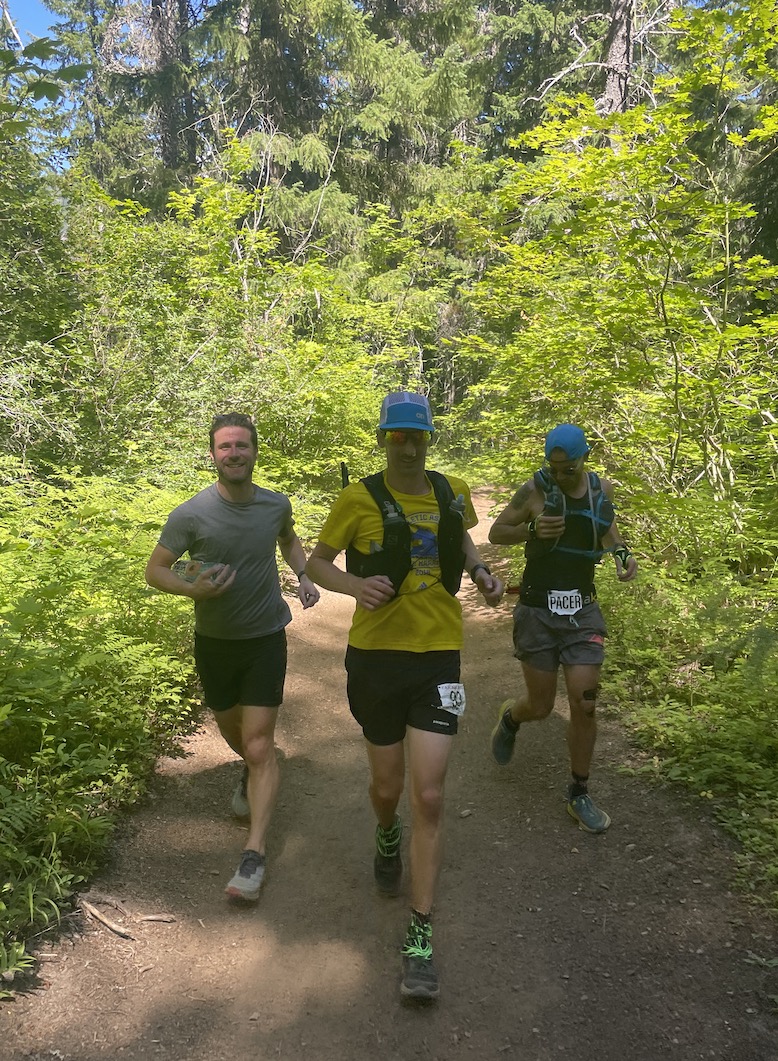
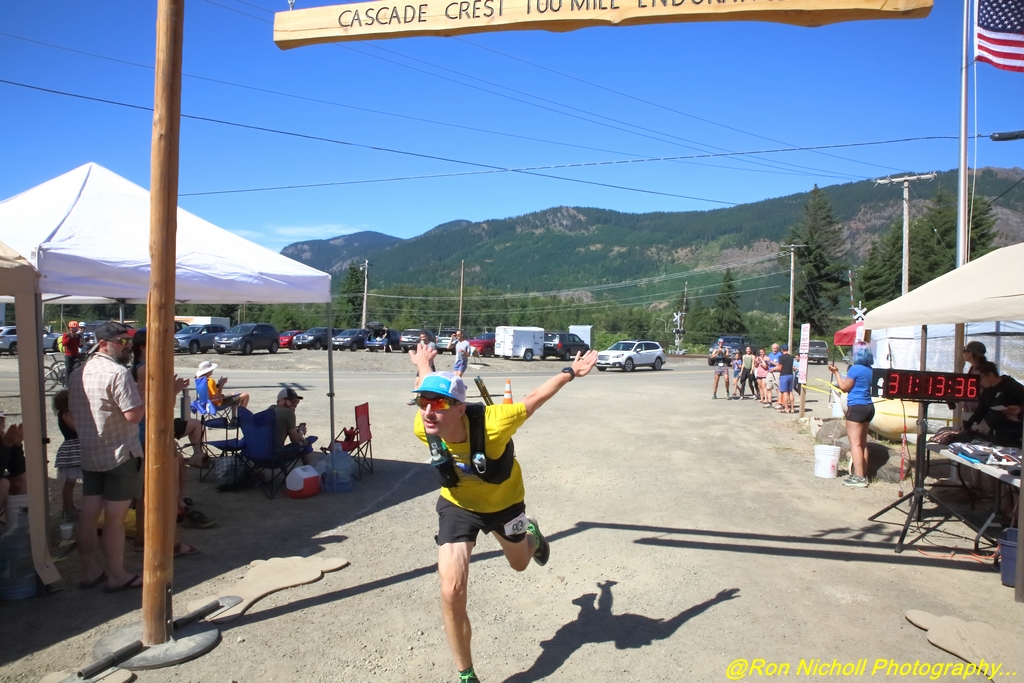

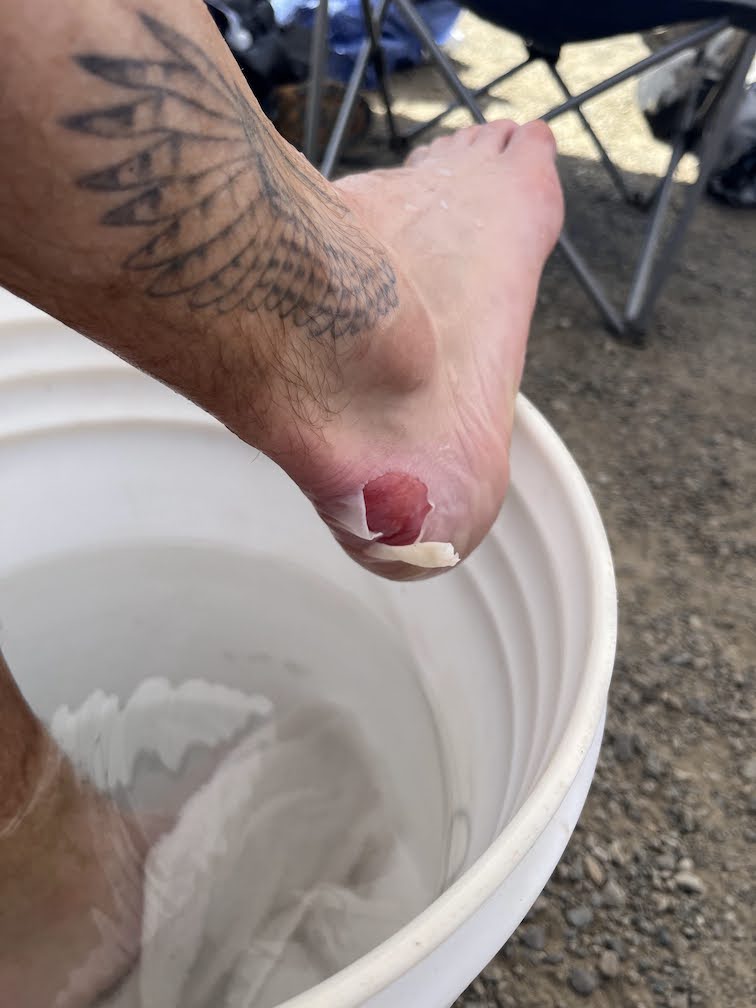
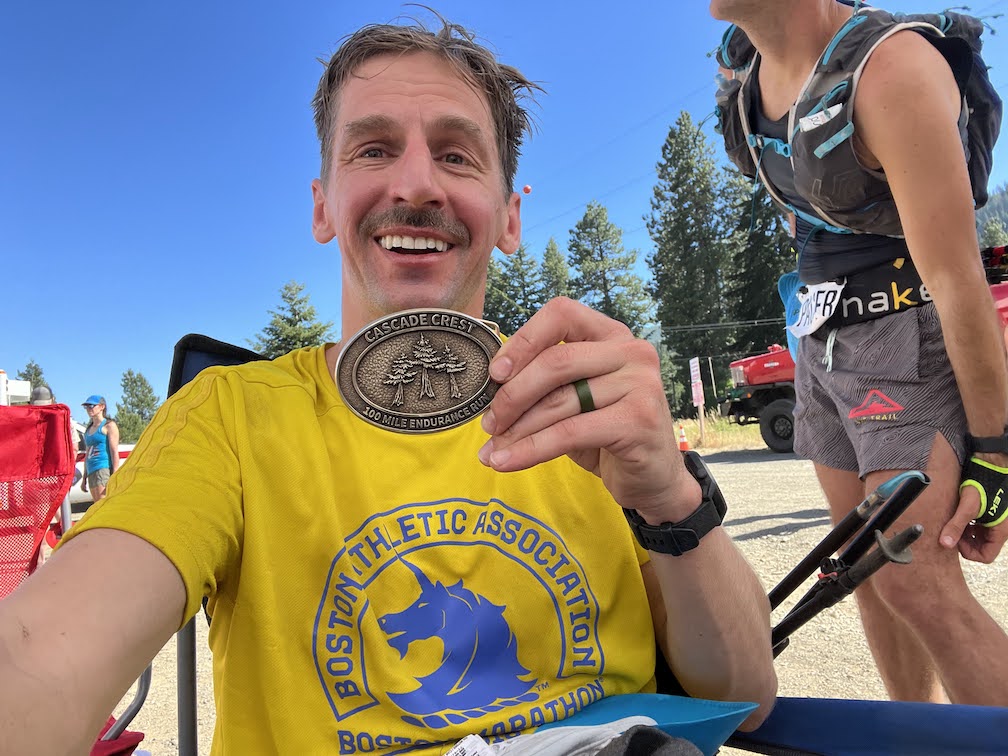
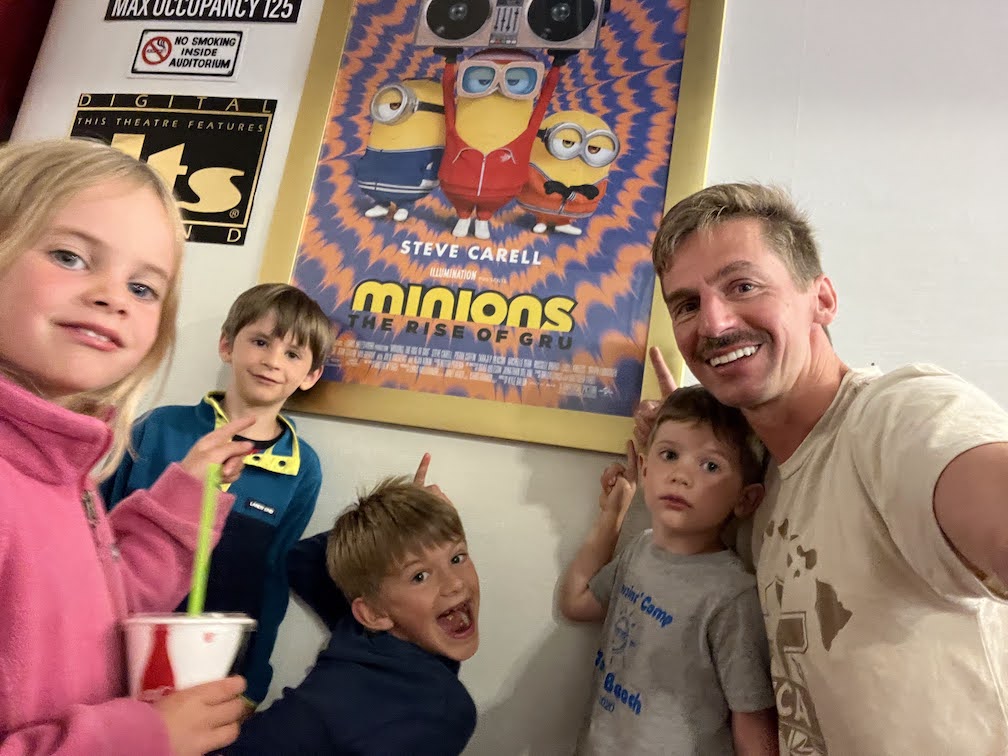
One thought on “Race Report: Cascade Crest 100 2022”